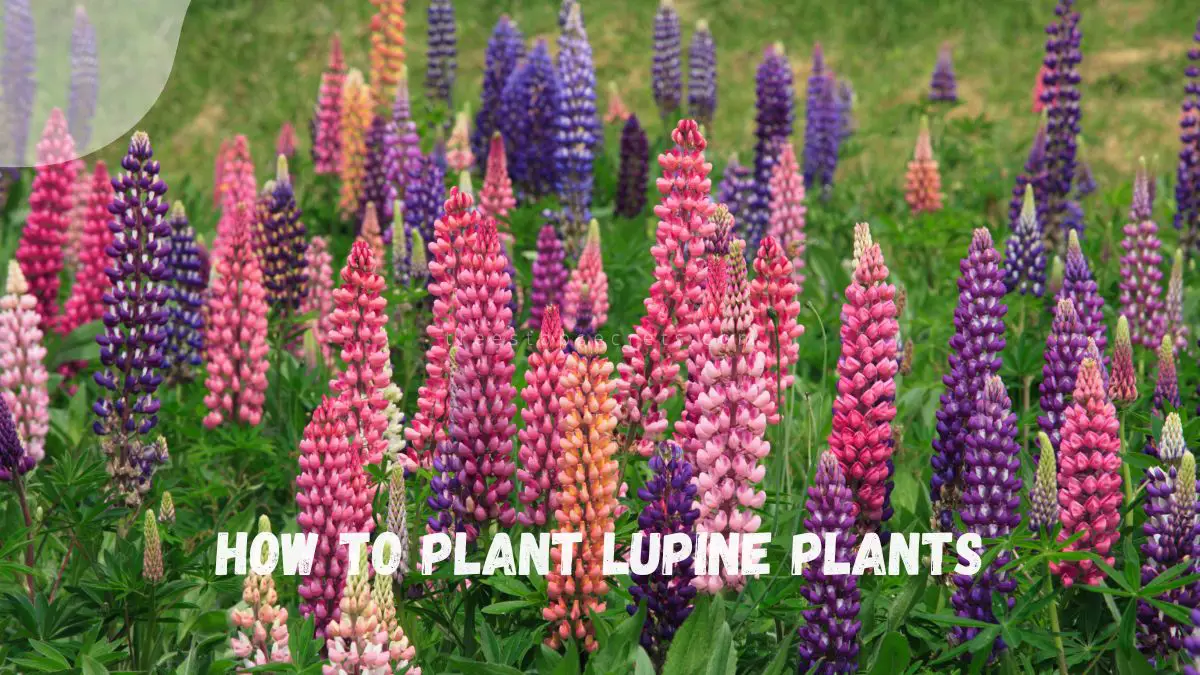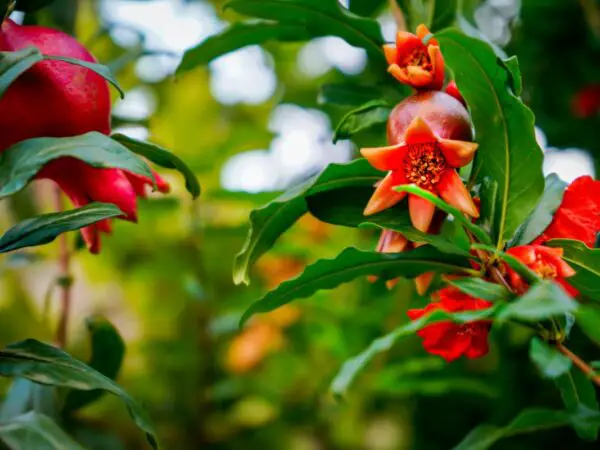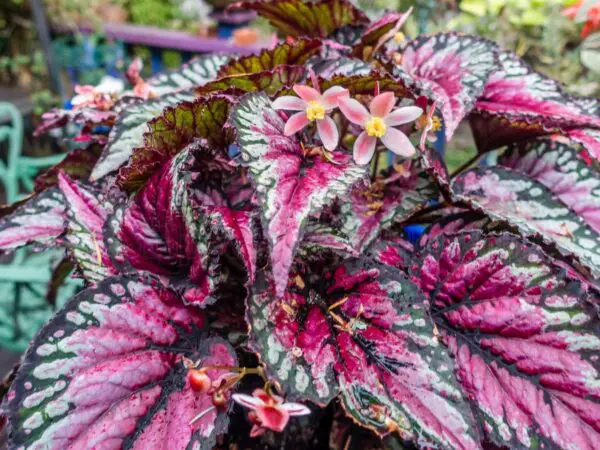Lupine plants, known for their vibrant blooms and resilience, have a rich history dating back centuries. Understanding how to plant these beauties can bring a touch of history and nature into your garden. Whether you're a seasoned gardener or just starting, learning the ins and outs of planting lupines will set you on the path to a colorful and thriving garden.
To successfully cultivate lupine plants, it's essential to grasp the historical significance behind these striking flowers' bloom and seed. By delving into the past and incorporating this knowledge into your gardening practices, you can enhance your gardening experience while creating a visually stunning outdoor space that echoes the beauty of nature.
Key Takeaways
- Understand the basics of lupine plants to ensure successful growth and care.
- Choose the right type of lupine based on your garden's conditions and your preferences.
- Prepare your planting area thoroughly to provide the best environment for lupines to thrive.
- Follow proper planting techniques, such as spacing and soil requirements, for healthy lupine growth.
- Master lupine care by watering, fertilizing, and protecting plants from pests and diseases.
- Enhance lupine growth by deadheading spent blooms and dividing overcrowded plants when needed.
Understanding Lupine Basics
Botanical Profile
Lupine plants are recognized for their tall spiky blooms and palmate leaves, creating a striking appearance in gardens. These garden lupine plants display a wide array of colors, ranging from purples and blues to pinks and yellows. The unique structure of lupine flowers is characterized by dense, elongated clusters that add charm to any garden setting.
Growth Requirements
Lupines thrive in environments with full sun to partial shade, ensuring optimal growth and blooming. It is crucial to provide well-draining soil to prevent root rot, which can hinder the plant's development. These plants prefer cool climates and have moderate watering needs, making them relatively easy to care for.
Flower Features
The distinctive shape of lupine flowers resembles pea-like blossoms growing on tall spikes, enhancing the visual appeal of these plants. One of the most appealing aspects of lupines is their attractive fragrance, which not only pleases gardeners but also attracts essential pollinators like bees and butterflies. Lupines boast an extended bloom period, ensuring long-lasting bursts of color in gardens throughout the season.
Pros and Cons
- Pros:
- Lupines act as nitrogen-fixing plants, improving soil fertility and benefiting neighboring plants.
- Cons:
- However, it's important to note that lupines can be toxic if ingested by humans and animals, necessitating caution when planting them.
- In some regions, lupines can exhibit invasive tendencies, requiring containment measures to prevent overgrowth.
Exploring Types of Lupine
Lupine Hybrids
Hybridization in lupines involves cross-breeding different varieties to create new color variations and unique traits. These hybrids often exhibit increased disease resistance, making them more resilient to common plant illnesses. Popular hybrid lupine varieties, such as the Gallery series, showcase vibrant colors and compact growth habits.
Native Varieties
Native lupine species, like Lupinus perennis in North America, play a crucial role in local ecosystems. These plants provide essential food sources for wildlife and contribute to soil health through nitrogen fixation. Conservation efforts are underway to protect native lupine populations from threats like habitat loss and invasive species.
Preparing for Planting
Soil Needs
Lupines thrive in loose, sandy soil that offers excellent drainage to prevent waterlogging. To enhance soil quality, consider incorporating compost to provide essential nutrients for the plants. Maintaining slightly acidic soil conditions is crucial for the optimal growth of lupines.
Adding compost not only enriches the soil but also aids in retaining moisture, promoting healthy root development. Loosening compacted soil before planting lupines can help improve aeration and drainage, ensuring better growth outcomes. Regularly testing soil pH levels and adjusting them as needed will create an ideal environment for lupine plants.
- Pros:
- Compost improves soil fertility.
- Sandy soil with good drainage reduces the risk of root rot.
- Cons:
- Overly acidic or alkaline soil can hinder lupine growth.
- Poor drainage may lead to waterlogged conditions, affecting plant health.
Optimal Timing
For lupines, the best time to plant depends on whether you are using seeds or container-grown plants. Planting before frost sets in allows the roots to establish before winter, leading to early blooms in spring. Transplant lupines during early spring or fall to ensure successful establishment and robust growth.
Planting lupine seeds in early spring provides them with ample time to develop strong roots before facing harsh winter conditions. Avoid planting too late in the season, as this may not allow sufficient time for the plants to establish themselves. Transplant container-grown lupines carefully to avoid damaging the roots and disrupt their growth cycle.
- Guidelines on Planting Lupines:
- Seed planting: Early spring for optimal root development.
- Container-grown: Early spring or fall for successful transplantation.
- Importance of Timing:
- Early planting ensures stronger root systems.
- Late planting may hinder plant establishment and growth.
Planting Techniques
Starting from Seed
To plant lupine seeds, start by scarifying or soaking them to aid in germination. This process involves scratching the seed coat or immersing the seeds in water. Sow the seeds at the appropriate depth in well-draining soil for successful germination. Patience is key as seedlings may take some time to emerge and establish in the garden.
- Scratch or soak lupine seeds
- Sow at right depth in soil
- Be patient for seedlings to grow
Container Planting
Container-grown lupine plants are ideal for immediate planting due to their portability and convenience. When planting potted lupines, ensure proper spacing to allow each plant enough room to grow and thrive in the garden. Amending the planting hole with organic matter can provide essential nutrients for container plants.
- Portable and convenient
- Spacing recommendations for potted lupines
- Benefits of adding organic matter
Mastering Lupine Care
Watering Practices
Newly planted lupines require consistent watering to establish strong roots for optimal growth. Gradually reduce watering frequency as the plants mature to encourage drought tolerance. Mulch around lupines helps retain soil moisture, supporting their water needs efficiently.
Proper Fertilization
Lupines have minimal fertilizer needs due to their ability to fix nitrogen from the air. Over-fertilizing can lead to excessive foliage growth, affecting overall plant health. Opt for organic fertilizers to promote healthy blooming without risking nutrient imbalance.
Pruning Tips
Pruning lupines is generally minimal, primarily focusing on removing spent blooms to promote secondary flowering. Regular pruning helps maintain plant health and prevents self-seeding, controlling the plant's size effectively. Consider deadheading as a beneficial practice for encouraging continuous blooming in lupines.
Enhancing Growth
Propagation Methods
Propagation of lupine plants can be done through seeds or division. Growing lupines from seeds allows for a diverse range of colors and varieties. On the other hand, division involves separating mature plants into smaller sections for new growth.
When propagating lupines, starting from seeds provides a cost-effective way to expand your garden. This method also offers a chance to experiment with different lupine species and hybrids. Dividing existing plants helps maintain the genetic integrity of the original plant while creating new ones.
To ensure successful propagation, it is essential to sow seeds in well-draining soil and provide adequate sunlight. When dividing plants, make sure each section has sufficient roots for independent growth. Regular watering and monitoring for signs of stress are crucial for plant vigor.
Pest Management
Lupine plants are susceptible to pests like aphids and spider mites, which can damage foliage and hinder growth. To combat these pests, introducing beneficial insects like ladybugs can help control their populations naturally. Ladybugs feed on aphids, keeping their numbers in check.
Early detection of pests is key to preventing widespread damage to lupine plants. Regularly inspecting leaves for signs of infestation, such as webbing or discoloration, allows for timely intervention. Implementing pest control measures early on can protect the overall health of your lupine garden.
Design Ideas with Lupine
Garden Design Tips
Lupines are fantastic for adding vertical interest to your garden. Plant them at the back of flower beds or against walls to create a striking backdrop. Their tall spires will add depth and dimension to your garden design.
Consider companion planting to enhance the beauty of your lupines. Pair them with flowers like roses, peonies, or poppies to create a visually appealing contrast in colors and textures. The combination of lupines with other plants can create a vibrant and dynamic garden landscape.
Lupines are incredibly versatile and can be incorporated into various garden styles. In cottage gardens, they add a whimsical touch, while in more formal landscapes, they bring a structured elegance. Whether you prefer a wild, natural look or a more manicured design, lupines can adapt seamlessly.
Troubleshooting Common Issues
Pest Problems
Lupine plants can be susceptible to pest issues such as powdery mildew or slugs. Powdery mildew appears as a white powdery substance on leaves, while slugs leave holes in foliage. To manage these pests, consider cultural controls like pruning affected areas and promoting good air circulation. Organic solutions like neem oil can also be effective.
Regularly monitoring pest populations is crucial to prevent infestations. By keeping an eye on your lupine plants, you can catch pest problems early and take action promptly. This proactive approach helps maintain the health and vigor of your plants.
- Cultural controls: Prune affected areas
- Organic solutions: Neem oil
- Importance of monitoring: Prevent infestations
Disease Control
Common diseases that can affect lupine plants include root rot and fungal leaf spots. Root rot typically occurs due to overwatering, highlighting the importance of proper watering practices for plant health. Ensuring good air circulation around the plants can help reduce the risk of fungal leaf spots.
Early detection and treatment of diseases are vital to safeguard the well-being of lupine plants. By promptly addressing any signs of disease, such as wilting or discoloration, you can prevent the spread and minimize damage to your plants.
- Preventive measures: Proper watering
- Risk reduction: Good air circulation
- Significance of early detection: Protect lupine health
Summary
You've now unlocked the secrets to successfully planting and caring for lupine plants. Understanding the basics, exploring different types, preparing the soil, planting with care, and troubleshooting issues are all crucial steps in your journey to beautiful lupine blooms. Remember to provide ample sunlight, well-draining soil, and regular watering to ensure your lupines thrive. You can enhance their growth by fertilizing appropriately and deadheading spent blooms. Get creative with design ideas to make your garden pop with vibrant lupine colors. If any problems arise, refer back to the troubleshooting section for quick solutions. Now it's time to roll up your sleeves and get those lupines in the ground – happy planting!
Frequently Asked Questions
How do I choose the right type of lupine for my garden?
When selecting a lupine variety, consider factors like your climate, soil type, and available space. Choose from perennial or annual types based on your preference for long-term growth or seasonal blooms.
What is the best time to plant lupine plants?
Plant lupines in early spring or fall to allow the roots to establish before extreme temperatures. Aim for cooler weather and avoid planting during hot summer months to prevent stress on the plants.
How often should I water my lupine plants?
Water lupines deeply once a week, ensuring the soil remains moist but not waterlogged. Adjust watering frequency based on weather conditions; increase during dry spells and reduce during rainy periods to prevent root rot.
Do lupine plants require special care after planting?
After planting, provide regular watering, mulching to retain moisture, and occasional fertilization during the growing season. Deadhead spent flowers to encourage continuous blooming and monitor for pests or diseases for early intervention.
Can lupines be grown in containers?
Yes, lupines can thrive in containers as long as they have well-draining soil, adequate sunlight, and regular watering. Choose a large container to accommodate the plant's deep taproot and provide support for taller varieties if needed.
Image Source: Paid image from CANVA


![Boost Your Garden’s Appeal: How to Care for Crape Myrtle Bush? [Expert Advice]](https://treestopsecrets.com/wp-content/uploads/2024/05/How-to-Care-for-Crape-Myrtle-Bush-600x450.jpg)


